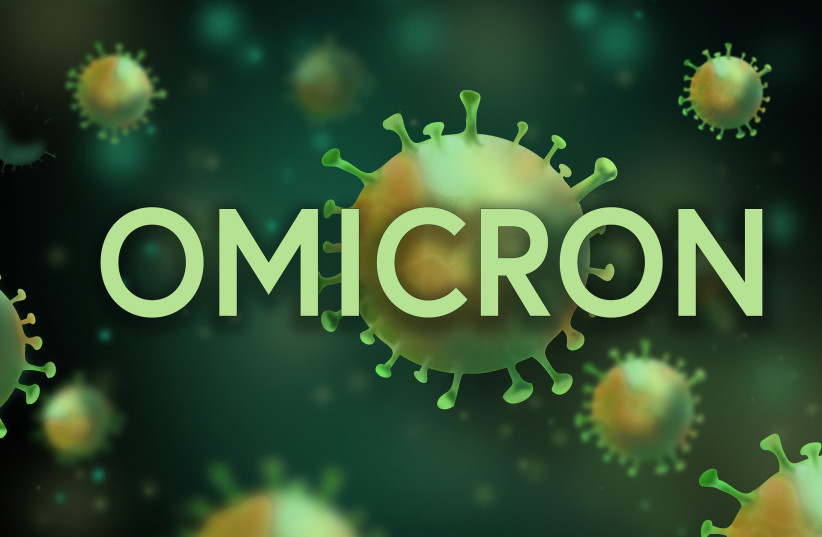The Omicron variant of SARS-CoV-2, the coronavirus that causes COVID-19, has infected millions of people around the world, but most of those infected and contagious likely never noticed, a new study has noted.
The findings shed light on a need for awareness, as the lack of it may have caused people who were infectious to not know it and therefore spread it further.
The study was published in the peer-reviewed academic journal JAMA Network Open.
<br>Omicron: The most infectious COVID-19 variant
Since the COVID-19 pandemic began, there have been a number of variants of the coronavirus which vary in terms of infectiousness and the level of severity of the disease it can cause.

Of these, the Omicron variant has proved to by far be the most infectious and transmissible, becoming the dominant strain across the world.
It is so transmissible, in fact, that it was at one point reported that it was the most infectious disease in history, though this is not true and it is not more infectious than, for example, measles. But having said that, Omicron is still highly contagious and its subvariants have also contributed to a new rise in cases.
Of course, this is despite the fact that many measures have been taken to limit the spread of the virus. COVID-19 vaccines have become rolled out throughout the world and immunization numbers have been high. Social distancing and mask usage have also become widespread. However, many places have lifted existing mandates and restrictions, and immunity levels from vaccines have been waning.
All of these factors have likely contributed to the rise in Omicron cases, but that isn't the full story.
Specifically, there remains a question regarding the role of asymptomatic carriers and people unaware that they're even sick.
<br>How do I know if I have COVID-19?
One other thing that has improved as the pandemic has continued is access to testing. At one point, getting tested for COVID-19 was very difficult. There could be massive lines, finding a way to a testing site, a waiting time to get results back or any other number of issues. Essentially, it was very impractical for many people.
However, rapid testing kits have become far more available and widespread, and now it is far easier to test one's self at home.
But despite that, determining how many people are unaware they have it is difficult.
Having said that, it is still a very important question.
If someone were to have COVID-19, they would be contagious and spread the disease to others. This is why isolation and quarantine policies exist. However, if one didn't know they had it, then they could venture into public, go about their daily life, and expose any number of people to the virus.
It is for this reason that many have wondered if people infected with COVID-19 but unaware of it - especially asymptomatic carriers who have no symptoms or those who just have minimal symptoms and might not realize the problem - are triggers of outbreaks.
Previous studies have looked into this and have indicated that the answer seems to be yes. However, without knowing how many people infected with Omicron are unaware of it, it is difficult to estimate how widespread this may be.
That is what this study sought to answer.

COVID-19 Omicron: The unknowing carriers
To figure this out, the researchers took a look at the Los Angeles County, California population during a recent Omicron surge.
All participants in the study had consented and were registered as either employees or patients at the Ceders-Sinai Medical Center and were part of a different study. As part of this, they all were invited for monthly health update surveys and would update the coordinators of the study regarding health updates, such as COVID-19 infection or vaccination.
As part of this, they also had monthly blood tests for any COVID-19 antibodies.
Overall, 210 participants were found likely to have had the Omicron variant.
But despite this, only 44% of them had any awareness of it. The majority (56%) were completely unaware, and only 10% of the majority reported any symptoms, which they had attributed to some other infection like a cold.
There is precedence for this, as earlier studies suggested that as many as around 80% of COVID-19 cases may be asymptomatic.
But the implications behind the finding point to a tendency of possibly dismissing mild symptoms or not getting tested without developing symptoms.
And this low level of awareness is likely a contributing factor to how fast Omicron has spread.
But with this study, it is hoped that further awareness will be made.
"We hope people will read these findings and think, 'I was just at a gathering where someone tested positive,' or, 'I just started to feel a little under the weather. Maybe I should get a quick test.' The better we understand our own risks, the better we will be at protecting the health of the public as well as ourselves."
Susan Cheng
"We hope people will read these findings and think, 'I was just at a gathering where someone tested positive,' or, 'I just started to feel a little under the weather. Maybe I should get a quick test,'" noted study author Susan Cheng. "The better we understand our own risks, the better we will be at protecting the health of the public as well as ourselves."
Ultimately, more research will be needed to better understand contributing factors, but the hope is that this research will also help manage individual risk for COVID-19.
